While it may not be as big or as famous as Broadway, Lexington, or any of the other Avenues in Manhattan, 6 ½ Avenue (also known as Holly Whyte Way) is real and it is celebrating a very special birthday: On March 6th, 2019, six-and-half years will have passed since the avenue was first opened to the public on September 6th, 2012.
Only six blocks long, 6 ½ Avenue carves a path between Sixth and Seventh Avenues that runs from 51st street to 57th street. In addition to having the Harry Potteresque fraction in its name, 6 ½ Avenue is notable because it is a pedestrian-only walkway that weaves its way through a series of public plazas, open access lobbies, and sun-lit atria that are privately owned but open to the public.
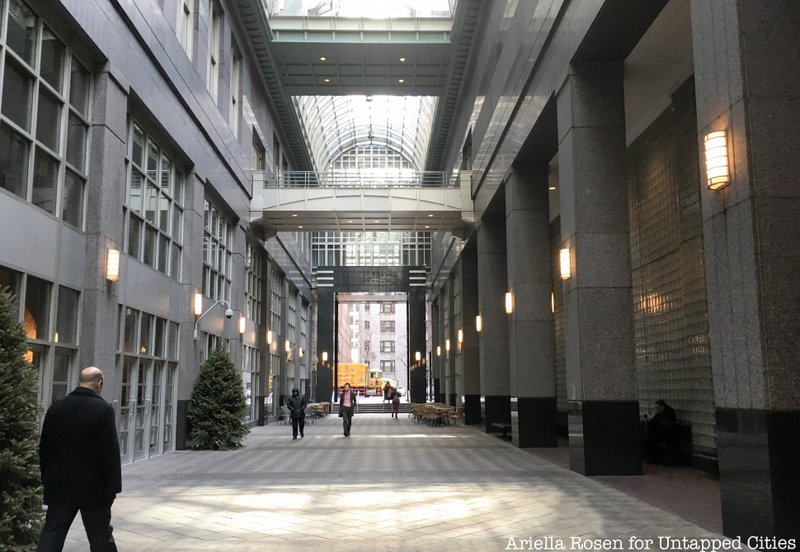 Looking north on 53rd st. from 52nd st. through a covered arcade.
Looking north on 53rd st. from 52nd st. through a covered arcade.
These spaces are not new, but the mid-avenue crosswalks that connect them are, as are the signs bearing the street’s name. These were added by the Department of Transportation after Brian Nesin and David Grider of Friends of Privately Owned Public Space (F-POPS) submitted their request for the crosswalks in 2011 in a bid to reclaim the spaces for the public.
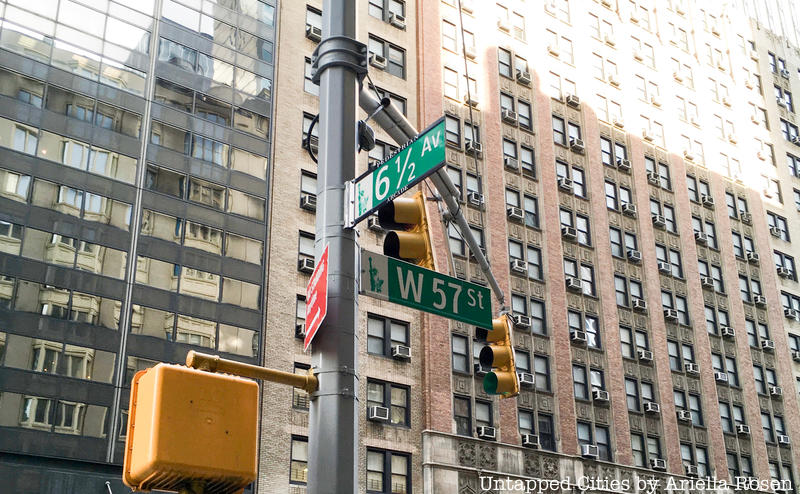
The signs at the now not-so-new crosswalks say “6 ½ Avenue,” but F-POPS originally christened it Holly Whyte Way to honor American writer, urban planner, and social critic William Hollingsworth “Holly” Whyte. While this name for the avenue was not officially adopted by the City, it is a fitting choice, given that Whyte, a contemporary of Jane Jacobs, dedicated his life to studying the social character of New York City.
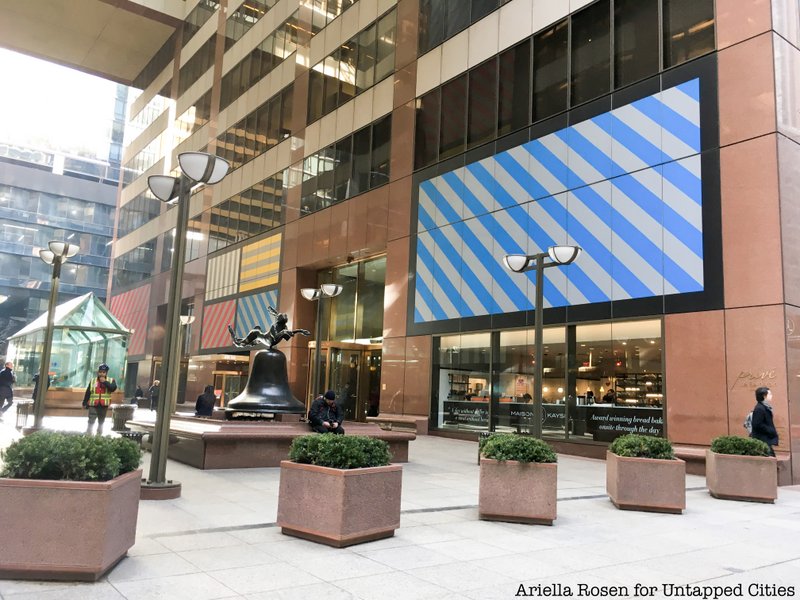
Whyte cared deeply for New York and fought to make a place for individuals in the urban landscape. In 1961, New York City’s zoning ordinance incentivized developers to construct street-level plazas and arcades, like the ones that make up 6 ½ Avenue. However, it was Whyte’s analysis of these spaces led the City to issue new design guidelines to improve these public areas and make them more inviting to people.
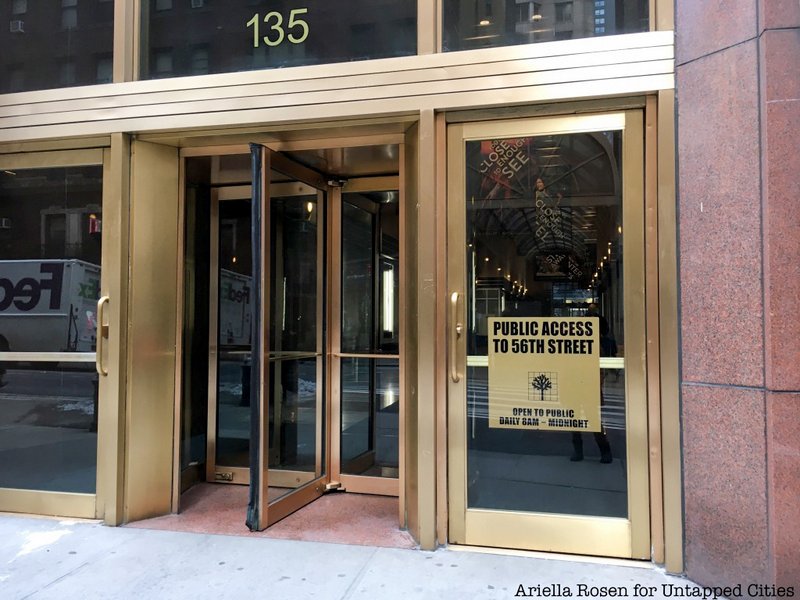 Signs indicate public access to lobbies along 6 1/2 Ave.
Signs indicate public access to lobbies along 6 1/2 Ave.
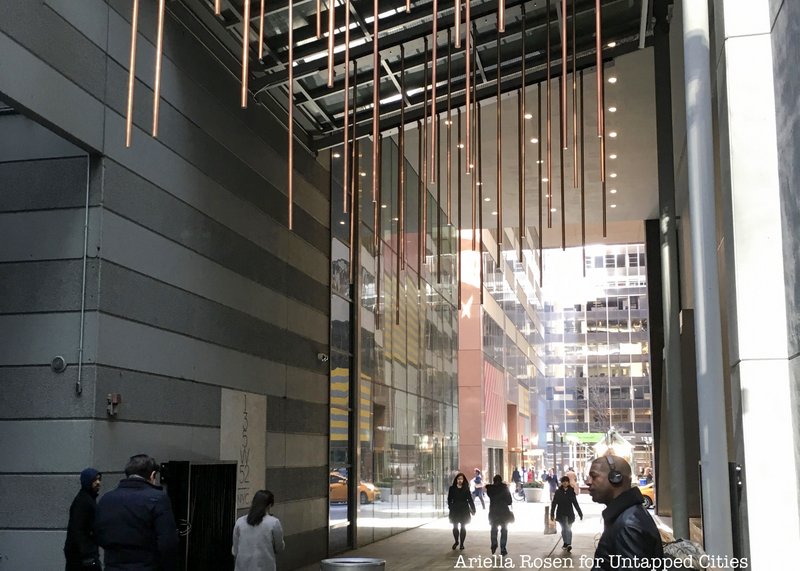
6 ½ Avenue, with its open seating, art installations, and public walkways, is exactly the sort of place that Whyte would have loved and fought for. Although Whyte died over a decade before the avenue’s conception, his love for the city is infused in the project that Nesin and Grider fostered and brought to life. But he would have likely been critical of the privatization of some of the avenue – particularly inside the lobby of the Parker Meridien hotel (below) which has come to function like an extension of the hotel rather than a public space. As Untapped Cities wrote in 2013, “The hotel has battled with the city over its lobby since 1979, which is legally meant to be a POPS. The hotel is required to provide a certain number of tables and chairs for the public, which it has neglected to do over the years. But the thing you notice upon entering at 57th street is that half the lobby has been appropriated by The Knave, the hotel’s Gothic style cafe and bar…It’s actually in clear violation of POPS regulations.”
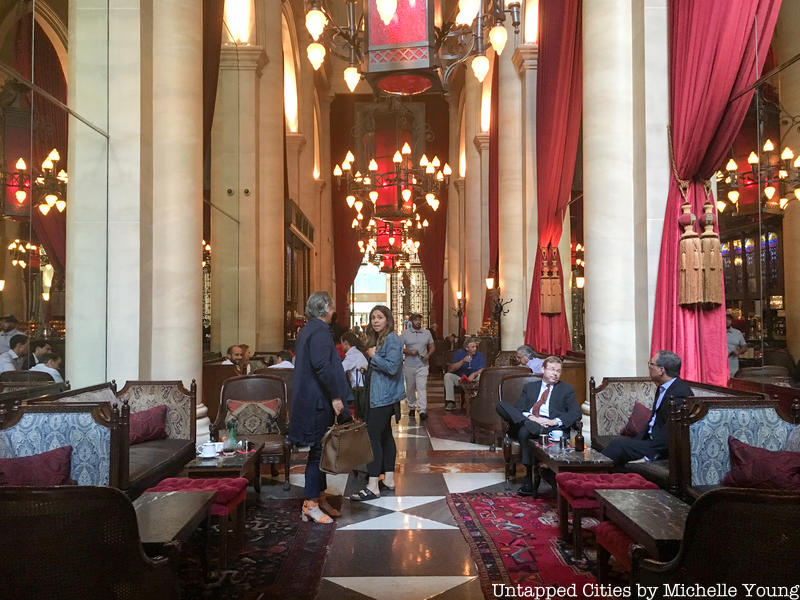 A luxurious public lobby inside the Parker Meridien Hotel is behind closed doors at 57th St but is actually part of 6 ½ Avenue, highlighting some of the public-private tension with the pedestrian insertion.
A luxurious public lobby inside the Parker Meridien Hotel is behind closed doors at 57th St but is actually part of 6 ½ Avenue, highlighting some of the public-private tension with the pedestrian insertion.
Here’s to hoping the next 6 ½ years will provide a refresh for the avenue, especially given the evolution of New York City’s approach to public spaces since 6 ½ Avenue’s inception.
Next, check out The Top 10 Secrets of NYC’s Bryant Park and 5 of Paris’ Covered Passages.






